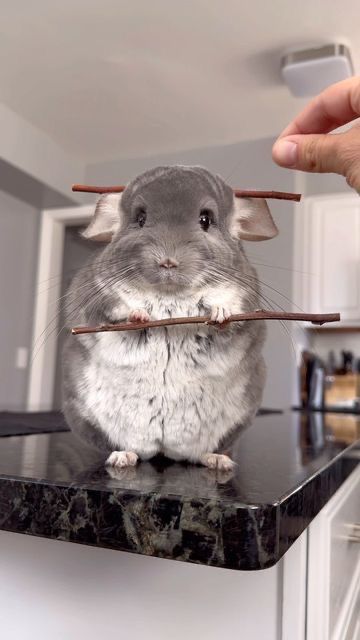Unique Pet Chinchilla Complete Guide
Introduction:- Chinchillas are adorable, furry creatures known for their playful personalities and irresistibly soft fur. Native to the Andes Mountains, they’ve become increasingly popular as pets due to their unique characteristics and low-maintenance grooming requirements. If you’re curious about chinchillas and what makes them so special, this guide has all the answers.
What is a Chinchilla?
A chinchilla pet is a small rodent that belongs to the family Chinchillidae. They are native to South America and are famous for their dense, velvety fur, which serves as protection against the cold climates of their mountainous habitats. There are two species of chinchillas:
- Chinchilla Lanig era:- More commonly kept as pets due to their smaller, more adaptable size.
- Chinchilla Brevicaudata:- A larger species that is now critically endangered in the wild.

Chinchilla Physical Characteristics
- Size: Adult chinchillas typically weigh between 1–2 pounds and are around 9–14 inches long, excluding their bushy tails.
- Fur: Their dense fur is their defining feature, with 50–80 hairs per follicle to prevent parasites and retain heat.
- Color: Most chinchillas are gray, but selective breeding has introduced variations like white, black, beige, and violet.
- Lifespan: With proper care, chinchillas can live up to 14-18 years in captivity.
Chinchilla Natural Habitat
Chinchilla pet originate from the rugged Andes Mountain in South America. They thrive at high altitudes, where temperatures are cold, and their dense fur offers insulation. Their natural environment consists of rocky terrain and sparse vegetation, which influences their diet and agility.
Chinchilla Behavior and Personality
Chinchillas are social, active, and curious animals. They are most active during the twilight hours (crepuscular), meaning they prefer mornings and evenings for play. They’re incredibly intelligent, capable of recognizing their owners, and thrive on mental stimulation.
Chinchillas are also highly social and do well in pairs or small groups, although they can bond closely with humans when raised as pets.
Chinchilla Pet Safe For Kids & Family:-
Chinchillas can be wonderful pets for families, but they require specific care to ensure a safe and enjoyable experience, especially with kids. These gentle animals are generally not aggressive and rarely bite, making them a safer choice for older children who can handle them responsibly.
However, chinchillas have delicate bones and a sensitive nature, so they are not ideal for very young children who might handle them roughly. They thrive in a calm, quiet environment and need careful supervision during playtime. With proper care, chinchillas can form strong bonds with family members and bring joy to households willing to meet their unique needs.
Caring for a Pet Chinchilla
1. Housing Needs
Chinchillas need a spacious cage with multiple levels to climb, jump, and explore. Wire cages with solid flooring and plenty of ventilation work best. Accessories like hideouts, chew toys, and exercise wheels are essential to keep them entertainment.
2. Chinchilla Pet Diet
A healthy chinchilla diet includes:
- Hay: Timothy hay is a staple and critical for their digestive health.
- Pellets: High-quality chinchilla pellets provide essential nutrients.
- Treats: Limited fruits or herbs as occasional treats.
Avoid sugary or fatty foods, as chinchillas have sensitive stomachs.
3. Chinchilla Pet Grooming Tips
Unlike other pets, chinchillas don’t bathe in water. Instead, they take dust baths to clean their fur and maintain its softness. Offer a dust bath 2–3 times a week using fine volcanic ash or chinchilla-specific dust.
4. Chinchilla Pet Temperature Sensitivity
Chinchillas are prone to heatstroke. Keep their environment cool, between 60°F to 70°F, and avoid direct sunlight.
Why Chinchillas Make Great Pets
- Low Maintenance: Their grooming needs are simple, and they don’t require daily walks like dogs.
- Allergy-Friendly: Their fur doesn’t produce oils that typically trigger pet allergies.
- Long Lifespan: A chinchilla’s long lifespan allows for years of companionship.
- Playful Nature: Their energetic and curious behavior is entertaining for both kids and adults.
Challenges of Owning a Chinchilla
While chinchillas are delightful pets, they come with some challenges:
- Fragile Nature: They have delicate bones, so handling must be gentle.
- Noisy at Night: Being crepuscular, they are often active and noisy during the evening hours.
- Specialized Care: Their dietary and environmental needs require consistent attention.
Conservation Status
Wild chinchilla are endangered due to habitat destruction and historical overhunting for their fur. Conservation efforts focus on habitat restoration and breeding programs to protect remaining populations.
Interesting Facts About Chinchillas
- World’s Softest Fur: Their fur is so dense that fleas and ticks can’t survive in it.
- Incredible Jumpers: Chinchilla can long jump up to 6-7 feet.
- Teeth Keep Growing: Like other rodents, their teeth grow continuously and need regular wear from chewing.
- Unique Defense Mechanism: Chinchillas can release patches of fur when threatened, confusing predators.
Chinchilla vs. Hamster: What’s the Difference?
When it comes to choosing a small, furry companion, chinchillas and hamsters often top the list. While both make wonderful pets, they are quite different in terms of care, behavior, and lifestyle needs. Let’s break down the key differences between these adorable critters. Size and Appearance Chinchillas are larger, with a body length of up to 12 inches, plus a bushy tail. Their soft, dense fur comes in various colors, making them unique and luxurious to touch. Hamsters, on the other hand, are much smaller, typically 4–7 inches long, and have shorter fur with a variety of patterns. Lifespan Chinchillas live much longer, averaging 10–20 years with proper care. Hamsters, however, have a shorter lifespan of about 2–3 years, making them a more temporary pet option. Behavior and Activity Chinchillas are nocturnal and highly energetic, requiring spacious enclosures for jumping and playing. Hamsters are also nocturnal but need less space and are content with tunnels and wheels in their cages. Diet and Maintenance Chinchillas thrive on hay and specially formulated pellets, whereas hamsters eat a varied diet of seeds, grains, and vegetables. Chinchillas are sensitive to heat and require cooler environments, while hamsters are more adaptable. In summary, if you want a long-term, low-maintenance companion with luxurious fur, go for a chinchilla pet. For a smaller, easy-to-care-for pet, hamsters are perfect. follow on Instagram
Overview:– Chinchillas are extraordinary animals that have captivated people for centuries, whether as pets or symbols of luxury due to their fur. With the right care and environment, they make loving companions, bringing joy with their playful antics and adorable personalities. Understanding their unique needs and respecting their natural instincts is key to enjoying a rewarding relationship with these incredible creatures.
Please Visit Our Other Website & Read More Article Pet Diet Tips & Diet Chart For Winter & Summer Essentials
Best 5 Pets for Home & Kids Best Diet Plan for Birman’s Cats
